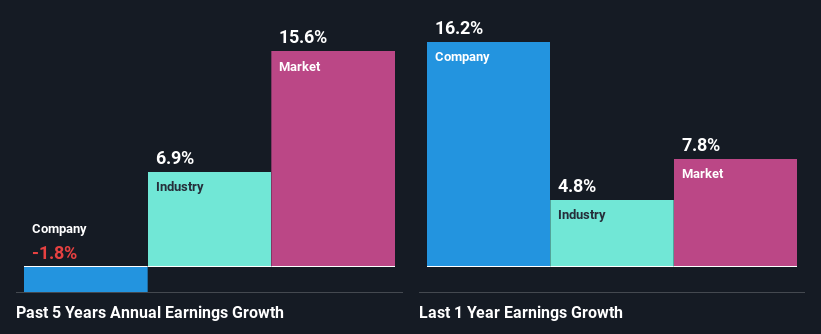Tootsie Roll Industries, Inc.'s (NYSE:TR) Has Performed Well But Fundamentals Look Varied: Is There A Clear Direction For The Stock?
Most readers would already know that Tootsie Roll Industries' (NYSE:TR) stock increased by 5.0% over the past three months. However, we decided to study the company's mixed-bag of fundamentals to assess what this could mean for future share prices, as stock prices tend to be aligned with a company's long-term financial performance. In this article, we decided to focus on Tootsie Roll Industries' ROE.
Return on Equity or ROE is a test of how effectively a company is growing its value and managing investors’ money. In simpler terms, it measures the profitability of a company in relation to shareholder's equity.
See our latest analysis for Tootsie Roll Industries
How To Calculate Return On Equity?
Return on equity can be calculated by using the formula:
Return on Equity = Net Profit (from continuing operations) ÷ Shareholders' Equity
So, based on the above formula, the ROE for Tootsie Roll Industries is:
9.7% = US$76m ÷ US$783m (Based on the trailing twelve months to December 2022).
The 'return' is the income the business earned over the last year. So, this means that for every $1 of its shareholder's investments, the company generates a profit of $0.10.
Why Is ROE Important For Earnings Growth?
Thus far, we have learned that ROE measures how efficiently a company is generating its profits. Based on how much of its profits the company chooses to reinvest or "retain", we are then able to evaluate a company's future ability to generate profits. Assuming everything else remains unchanged, the higher the ROE and profit retention, the higher the growth rate of a company compared to companies that don't necessarily bear these characteristics.
Tootsie Roll Industries' Earnings Growth And 9.7% ROE
At first glance, Tootsie Roll Industries' ROE doesn't look very promising. Yet, a closer study shows that the company's ROE is similar to the industry average of 12%. Having said that, Tootsie Roll Industries' net income growth over the past five years is more or less flat. Bear in mind, the company's ROE is not very high. Hence, this provides some context to the flat earnings growth seen by the company.
We then compared Tootsie Roll Industries' net income growth with the industry and found that the average industry growth rate was 6.9% in the same period.
The basis for attaching value to a company is, to a great extent, tied to its earnings growth. The investor should try to establish if the expected growth or decline in earnings, whichever the case may be, is priced in. Doing so will help them establish if the stock's future looks promising or ominous. If you're wondering about Tootsie Roll Industries''s valuation, check out this gauge of its price-to-earnings ratio, as compared to its industry.
Is Tootsie Roll Industries Efficiently Re-investing Its Profits?
In spite of a normal three-year median payout ratio of 37% (or a retention ratio of 63%), Tootsie Roll Industries hasn't seen much growth in its earnings. Therefore, there might be some other reasons to explain the lack in that respect. For example, the business could be in decline.
In addition, Tootsie Roll Industries has been paying dividends over a period of at least ten years suggesting that keeping up dividend payments is way more important to the management even if it comes at the cost of business growth.
Conclusion
On the whole, we feel that the performance shown by Tootsie Roll Industries can be open to many interpretations. While the company does have a high rate of profit retention, its low rate of return is probably hampering its earnings growth. Up till now, we've only made a short study of the company's growth data. So it may be worth checking this free detailed graph of Tootsie Roll Industries' past earnings, as well as revenue and cash flows to get a deeper insight into the company's performance.
Have feedback on this article? Concerned about the content? Get in touch with us directly. Alternatively, email editorial-team (at) simplywallst.com.
This article by Simply Wall St is general in nature. We provide commentary based on historical data and analyst forecasts only using an unbiased methodology and our articles are not intended to be financial advice. It does not constitute a recommendation to buy or sell any stock, and does not take account of your objectives, or your financial situation. We aim to bring you long-term focused analysis driven by fundamental data. Note that our analysis may not factor in the latest price-sensitive company announcements or qualitative material. Simply Wall St has no position in any stocks mentioned.
Join A Paid User Research Session
You’ll receive a US$30 Amazon Gift card for 1 hour of your time while helping us build better investing tools for the individual investors like yourself. Sign up here

 Yahoo Finance
Yahoo Finance 
